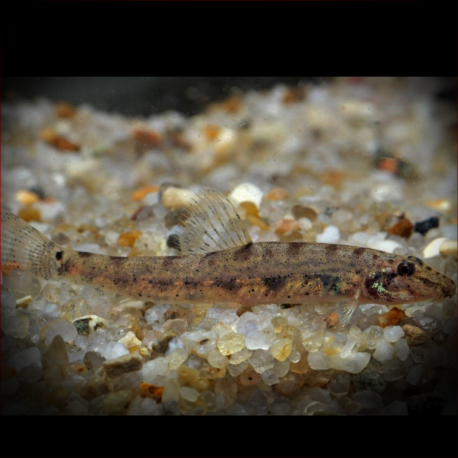More info
Datasheet
| Minimum Tank Size | 60 litres / 15.85 US gallons |
| Maximum Size | 5.2cm / 2.05inches |
| Temperature | 23°C / 73.40°F - 26°C / 78.80°F |
| Hardness | 0.00dgH / 0ppm - 10.03dgH / 179ppm |
| pH | 4.0-6.5 |
General Description
Kottelatlimia Hipporhynchos, a member of the family Cobitidae, is the largest known species within the genus Kottelatlimia. Distinguished by the presence of papillae covering its mouthparts, lips, barbels, and lobes—features absent in other related species, this fish exhibits unique traits like males with posterior projections forming a broad, contiguous blade-like structure on the first branched pectoral-fin rays. The taxonomy and phylogenetics surrounding K. Hipporhynchos have been extensively studied alongside its habitat and distribution in the wild.
Aquarium Setup
To recreate its natural environment, a tank size of at least 60 litres is recommended. The setup should feature a soft, sandy substrate as this fish tends to bury itself, water-worn rocks, driftwood branches, tree roots, and dim lighting unless plants are intended. Water quality should be a top priority, with spotless conditions and oxygenation being crucial for the well-being of K. Hipporhynchos.
Behaviour
Peaceful among conspecifics and other fish species, K. Hipporhynchos thrives in a group of four or more individuals. It is not suited for aggressive tankmates and does well with diminutive schooling cyprinids, anabantoids, or blackwater-dwelling characins. Care must be taken with substrate-dwelling loaches and nemacheilids, as some species might be territorial or unsuitable tankmates.
Feeding and Diet
Being a micropredator, K. Hipporhynchos sifts through substrate for insect larvae and small crustaceans. In captivity, it accepts a varied diet of sinking dried foods, live and frozen options like Artemia, Tubifex, Daphnia, and bloodworms. A balanced diet is essential for the overall health of this species.
Reproduction & Dimorphism
Reproduction behavior of K. Hipporhynchos remains unrecorded in aquarium settings. Mature males develop an enlarged first branched pectoral-fin ray with a blade-like structure, while adult females are slightly larger and heavier-bodied. These distinct differences help in sexual dimorphism within the species.
Habitat and Distribution
Native to slow-moving forest streams and blackwater peat swamps in Kalimantan Tengah, Indonesian Borneo, K. Hipporhynchos is typically found in clear, tannin-stained waters with white sand substrates. It coexists with various fish species in the same habitat and requires specific water conditions for its survival.
This entry provides a comprehensive overview of Kottelatlimia Hipporhynchos, covering important aspects from its behavior and feeding habits to its natural habitat and taxonomy.

